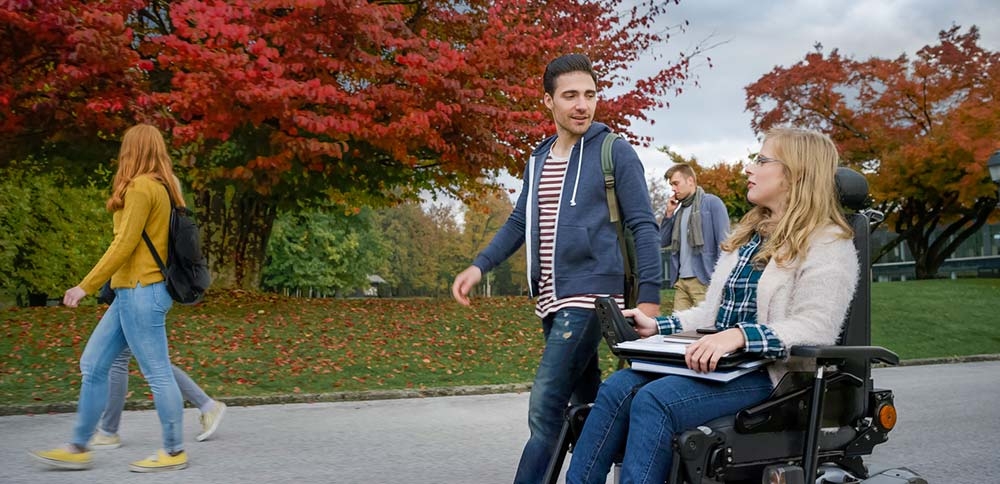Navigating the Complexities of Disability in Modern Society

Navigating the Complexities of Disability in Modern Society
Introduction:
In the mosaic of human diversity, disability is a significant thread. Yet, for too long, society has often treated disability as an afterthought or a burden rather than a facet of human experience deserving understanding, accommodation, and celebration. In recent years, there has been progress, but there is still much work to be done. This article delves into the complexities of disability in modern society, exploring the challenges, advancements, and the path toward a more inclusive future.
Understanding Disability:
Disability is a multifaceted concept encompassing physical, cognitive, sensory, and mental health impairments that may limit a person's ability to engage in everyday activities. However, it's crucial to recognize that disability is not solely defined by individual impairments; rather, it is shaped by societal barriers, attitudes, and structures that hinder full participation and inclusion.
Challenges Faced by the Disabled:
One of the most pervasive challenges faced by the disabled is social stigma and discrimination. Stereotypes and misconceptions often lead to exclusion, marginalization, and even violence. Accessibility remains a significant issue, with many public spaces, transportation systems, and digital platforms still inaccessible to people with disabilities. Moreover, economic disparities persist, as disabled individuals often face barriers to employment and financial independence.
Advancements and Empowerment:
Despite these challenges, there have been significant advancements in the realm of disability rights and inclusion. Legislation such as the Americans with Disabilities Act (ADA) in the United States and the United Nations Convention on the Rights of Persons with Disabilities (CRPD) globally have laid the foundation for legal protections and accessibility standards. Technological innovations, such as assistive devices and inclusive design, have opened doors for greater independence and participation. Additionally, grassroots movements led by disabled activists have brought visibility to disability issues and advocated for systemic change.
The Importance of Intersectionality:
It's crucial to recognize that disability intersects with other aspects of identity, such as race, gender, sexuality, and socioeconomic status. Intersectional experiences compound discrimination and marginalization, highlighting the need for an inclusive approach that addresses the unique challenges faced by disabled individuals from diverse backgrounds. Intersectional advocacy and representation are essential for building a more equitable and inclusive society for all.
Building a More Inclusive Future:
Creating a truly inclusive society requires concerted efforts from all stakeholders. Governments must prioritize disability rights and invest in accessible infrastructure, education, and healthcare. Businesses can promote diversity and inclusion in the workplace by implementing inclusive policies and accommodating employees with disabilities. Media and entertainment industries have a responsibility to portray disabled individuals authentically and diversify representation. And, perhaps most importantly, individuals can challenge their own biases, educate themselves on disability issues, and be allies in the fight for equality and inclusion.
Conclusion:
The journey toward a more inclusive society for disabled individuals is ongoing and multifaceted. It requires not only structural changes but also shifts in attitudes, perceptions, and cultural norms. By recognizing the inherent value and dignity of every individual, regardless of ability, we can create a world where everyone has the opportunity to thrive and contribute their unique talents and perspectives. Disability is not a limitation but a facet of human diversity that enriches the fabric of society. It's time to embrace inclusion wholeheartedly and build a future where everyone belongs.
- Arts
- Business
- Computers
- Παιχνίδια
- Health
- Κεντρική Σελίδα
- Kids and Teens
- Money
- News
- Recreation
- Reference
- Regional
- Science
- Shopping
- Society
- Sports
- Бизнес
- Деньги
- Дом
- Досуг
- Здоровье
- Игры
- Искусство
- Источники информации
- Компьютеры
- Наука
- Новости и СМИ
- Общество
- Покупки
- Спорт
- Страны и регионы
- World


